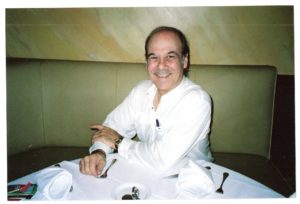A Special Moment In Time: The Five Terrible Events of 1926 Part II
[AdSense-A]
As was noted in our last column, 1926, which business and commercial interests would legitimately assume would simply be a continuation of the several great “boom” years preceding it, were distressed when the four-masted Danish sailing freighter Prinz Valdemar capsized in the turning basin at the mouth of the Miami harbor on January 10, 1926, leaving the region bereft of shipping alternatives to the Florida East Coast Railway. (While the Seaboard Railway had been extended to Miami late the previous year, it was so far west—at least at that time—and there were so few businesses which were located “out there” that it was, basically, meaningless in bringing freight in and out of Miami.)
Although the F E C was being double-tracked between Jacksonville and Miami, the then-existing infrastructure (sidings, team tracks, yards) was simply overwhelmed by the sudden and massive demands placed upon it to handle the huge amounts of building material and other goods needed for a city in the midst of a great economic boom. Because of that, the FEC was forced to embargo itself which left the railroad in a position of being unable to accept any freight shipments of any kind except for those of food and drugs unless the shipments of other materials were accompanied by a letter permitting their movement signed by the FEC’s Vice President and General Manager, H. N. Rodenbaugh. Simply put, there was no space for a single incoming freight car between Jacksonville and Miami unless a freight car was emptied and moved out: every siding, every team track and every yard track was filled.
It might be of interest to our readers to learn that, following the City of Miami Beach’s moving to the new city hall on 17th Street in 1978, it was, in 1980, my good fortune to be the person given the permission to “clean out” the old city hall on Washington Avenue. It was in going through the numerous files that I turned up a letter from Miami Beach’s first (and longest-lasting—1925—1958) city manager, the great Claude Renshaw, pleading with Mr. Rodenbaugh to allow a carload of material needed to extend the city’s “whiteway” system to be approved for shipment so that the city could continue its expansion of the street lighting project in place at the time.
That embargo, the second of “the five terrible events of 1926” would have it’s own far-reaching effects, for as word began to permeate throughout the nation via the press, and news of the embargo began to filter into and through the consciousness of thousands of home and lot buyers and the almost equally large number of prospective business owners (particularly in the area east of the Mississippi River), the perception of the Greater Miami area (including Miami Beach, Coral Gables, Sunny Isles, North Miami Beach and the other, various boom-time developments) as a place of unlimited opportunity, fantastic growth, endless potential and enormous profit-making possibilities began to fade.
The less than positive commentary would make its way to the various business news sections of newspapers and into national magazines, including The American Weekly, Collier’s, Saturday Evening Post, Time and others. That third terrible event would, unhappily, be no more than a prelude to the fourth as household after household would decide to simply stop (in their minds) “throwing good money after bad” and would simply allow the properties that they had bought (usually with $10.00 down and a payment of $10.00 per month) from George Merrick, Harvey Baker Graves, Carl Fisher, Ellen Spears Harris and Hugh Anderson, Arthur Griffing and others selling land in the various developments to go into default. And once the decision was made by thousands of would-be owners to cease making monthly payments, the various boom-time magnates became more and more hard-pressed to make good on their statements of services and promises of a golden future.
One of the least fortunate of the developers was Merle Tebbetts, he the founder of the Florida Cities Finance Company, which purchased the acreage of Lafe Allen, who had purchased the property from Captain Fulford and began the development of what eventually would become North Miami Beach. Tebbetts poured money into Fulford-by-the-Sea, and, like Merrick in Coral Gables, Griffing in Biscayne Park, Spears Harris and Anderson in the Shoreland Company (Miami Shores), Harvey Baker Graves in Sunny Isles and almost all the rest of them, was riding the crest of the great boom until, following the first four events noted last week and above, “the bottom dropped out.”
Tebbetts, unable to make good on many of the promises he had made while developing Fulford-by-the-Sea was arrested on federal mail fraud charges and put in jail. In bankruptcy, the development simply faded away and would only be resurrected years later after Lafe Allen (for whom North Miami Beach’s public library is named) took back the property, paid the taxes on it, and, basically, saved NMB.
The four events discussed thus far, terrible as they were, would pale in comparison to the horror of the decade, the September 17th and 18th 1926 hurricane. Next issue we will present that event to you in all its terror, leaving you in suspense to learn the truth and the facts (no “anecdotal evidence!”) about that horrific storm.
[si-contact-form form=’2′]


